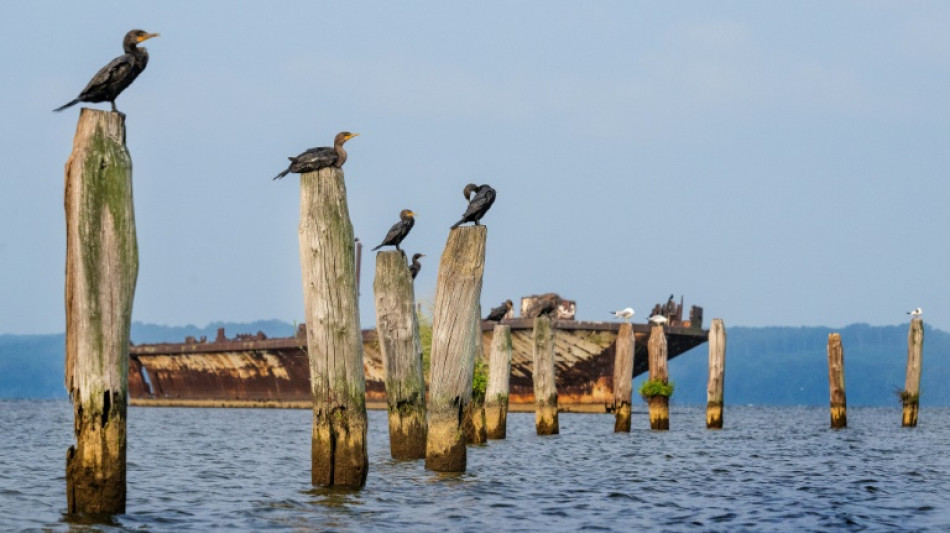
-
 China suspends 'special port fees' on US vessels
China suspends 'special port fees' on US vessels
-
US senators take major step toward ending record shutdown
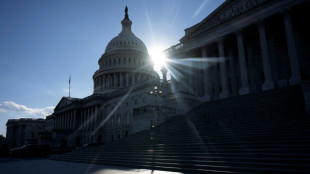
-
 Typhoon Fung-wong leaves flooded Philippine towns in its wake
Typhoon Fung-wong leaves flooded Philippine towns in its wake
-
From Club Med to Beverly Hills: Assinie, the Ivorian Riviera

-
 The 'ordinary' Arnie? Glen Powell reboots 'The Running Man'
The 'ordinary' Arnie? Glen Powell reboots 'The Running Man'
-
Typhoon exposes centuries-old shipwreck off Vietnam port

-
 French court to decide if ex-president Sarkozy can leave jail
French court to decide if ex-president Sarkozy can leave jail
-
China lifts sanctions on US units of South Korea ship giant Hanwha

-
 Japan death row inmate's sister still fighting, even after release
Japan death row inmate's sister still fighting, even after release
-
Taylor sparks Colts to Berlin win as Pats streak hits seven

-
 Dreyer, Pellegrino lift San Diego to 4-0 MLS Cup playoff win over Portland
Dreyer, Pellegrino lift San Diego to 4-0 MLS Cup playoff win over Portland
-
Indonesia names late dictator Suharto a national hero

-
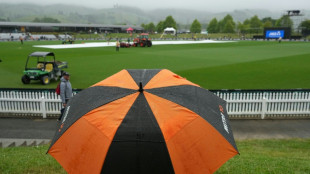 Fourth New Zealand-West Indies T20 washed out
Fourth New Zealand-West Indies T20 washed out
-
Tanzania Maasai fear VW 'greenwashing' carbon credit scheme
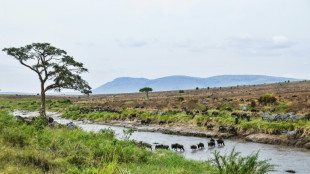
-
 Chinese businesswoman faces jail after huge UK crypto seizure
Chinese businesswoman faces jail after huge UK crypto seizure
-
Markets boosted by hopes for deal to end US shutdown

-
 Amazon poised to host toughest climate talks in years
Amazon poised to host toughest climate talks in years
-
Ex-jihadist Syrian president due at White House for landmark talks

-
 Saudi belly dancers break taboos behind closed doors
Saudi belly dancers break taboos behind closed doors
-
The AI revolution has a power problem

-
 Big lips and botox: In Trump's world, fashion and makeup get political
Big lips and botox: In Trump's world, fashion and makeup get political
-
NBA champion Thunder rally to down Grizzlies

-
 US senators reach deal that could end record shutdown
US senators reach deal that could end record shutdown
-
Weakening Typhoon Fung-wong exits Philippines after displacing 1.4 million

-
 Lenny Wilkens, Basketball Hall of Famer as player and coach, dies
Lenny Wilkens, Basketball Hall of Famer as player and coach, dies
-
Empire Metals Limited - Speaking at TZMI Congress

-
 Sir Dave Lewis Appointed Diageo plc CEO
Sir Dave Lewis Appointed Diageo plc CEO
-
Griffin wins PGA Mexico title for third victory of the year

-
 NFL makes successful return to Berlin, 35 years on
NFL makes successful return to Berlin, 35 years on
-
Lewandowski hat-trick helps Barca punish Real Madrid slip

-
 George warns England against being overawed by the All Blacks
George warns England against being overawed by the All Blacks
-
Lewandowski treble helps Barca beat Celta, cut gap on Real Madrid

-
 Neves late show sends PSG top of Ligue 1, Strasbourg down Lille
Neves late show sends PSG top of Ligue 1, Strasbourg down Lille
-
Inter go top of Serie A after Napoli slip-up

-
 Bezos's Blue Origin postpones rocket launch over weather
Bezos's Blue Origin postpones rocket launch over weather
-
Hamilton upbeat despite 'nightmare' at Ferrari

-
 Taylor sparks Colts to Berlin win, Pats win streak hits seven
Taylor sparks Colts to Berlin win, Pats win streak hits seven
-
Alcaraz and Zverev make winning starts at ATP Finals

-
 Protests suspend opening of Nigeria heritage museum
Protests suspend opening of Nigeria heritage museum
-
Undav brace sends Stuttgart fourth, Frankfurt win late in Bundesliga

-
 Roma capitalise on Napoli slip-up to claim Serie A lead
Roma capitalise on Napoli slip-up to claim Serie A lead
-
Liverpool up for the fight despite Man City masterclass, says Van Dijk

-
 Two MLB pitchers indicted on manipulating bets on pitches
Two MLB pitchers indicted on manipulating bets on pitches
-
Wales rugby captain Morgan set to be sidelined by shoulder injury

-
 After storming Sao Paulo podium, 'proud' Verstappen aims to keep fighting
After storming Sao Paulo podium, 'proud' Verstappen aims to keep fighting
-
US flights could 'slow to a trickle' as shutdown bites: transport secretary
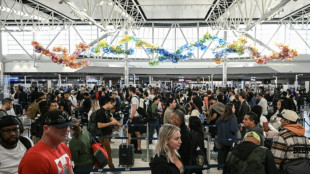
-
 Celtic close on stumbling Scottish leaders Hearts
Celtic close on stumbling Scottish leaders Hearts
-
BBC chief resigns after row over Trump documentary

-
 Norris extends title lead in Sao Paulo, Verstappen third from pit-lane
Norris extends title lead in Sao Paulo, Verstappen third from pit-lane
-
Norris wins in Sao Paulo to extend title lead over Piastri


New research reveals where N. American bird populations are crashing
Birds are facing a population crisis, but a lack of high-quality localized data has made it difficult to understand the drivers behind specific declines and to craft effective conservation responses.
Now, a team of researchers has developed an innovative solution, combining vast amounts of data from a popular birding app with machine learning and advanced statistical methods to overcome the challenges posed by large-scale citizen science projects.
Their study, published Thursday in Science, reveals that North American bird populations are being hit hardest in their traditional strongholds, as rapid environmental shifts -- including climate change -- disrupt these once-reliable refuges.
"We have known for a long time that bird populations are declining," lead author Alison Johnston, an ornithologist and ecological statistician at the University of St Andrews, told AFP.
"What we aimed to do here was to look at better population trends in much more detail," she said -- data that is "a lot more tailored for conservation decisions and understanding what we can actually do on the ground."
A landmark 2019 paper also in Science found that North America had lost 2.9 billion breeding adult birds between 1970 and 2017 -- a net loss of nearly a third. The 2025 US State of the Birds report found continued declines in nearly every ecological biome.
Birds play vital roles in ecosystems, from pollinating plants and dispersing seeds to controlling pests.
Their loss disrupts food chains, undermines forest health, reduces crop yields -- and deprives people of the joy of watching species that have long been part of human culture.
But the threats are diverse: from prairie loss impacting Baird's Sparrows in the Midwest to Hawaiian birds threatened by rising seas and invasive predators, including cats.
Johnston and colleagues turned to eBird, an open-source project, analyzing 36 million observations spanning 2007 to 2021 across North America, Central America, and the Caribbean.
A major challenge with citizen science data is separating changes in bird populations from changes in how people watch birds.
The team overcame this with several innovations: using only checklists where observers recorded all species seen; accounting for variables like observation time and distance traveled; and applying a machine learning model that controlled for shifting birding behavior.
They validated the approach through thousands of simulations, ultimately focusing on 495 species for which the results proved reliable.
Unlike previous monitoring that tracked trends at the state or regional level, their analysis looked at plots 27 kilometers by 27 kilometers (17 miles by 17 miles) -- roughly the size of New York City.
Key findings included that 97 percent of species had both areas of increasing population and areas of decline, revealing hidden complexity.
Wood ducks for instance are declining in the Southeast US but thriving farther north, suggesting a climate-related shift.
The study also found that 83 percent of species are shrinking fastest in areas where they were most abundant, particularly grassland and aridland breeders.
The reasons aren't fully known, but one theory is that birds adapted to rich environments may be less resilient to rapid change than those evolved for harsher conditions.
Conversely, some aridland, forest, and generalist species are rebounding in parts of their range where they were once scarce -- pointing to pockets of opportunity.
The findings are already being used by wildlife agencies, for example in permitting wind energy projects to minimize impacts on species such as Bald Eagles.
A.Rodriguezv--AMWN

